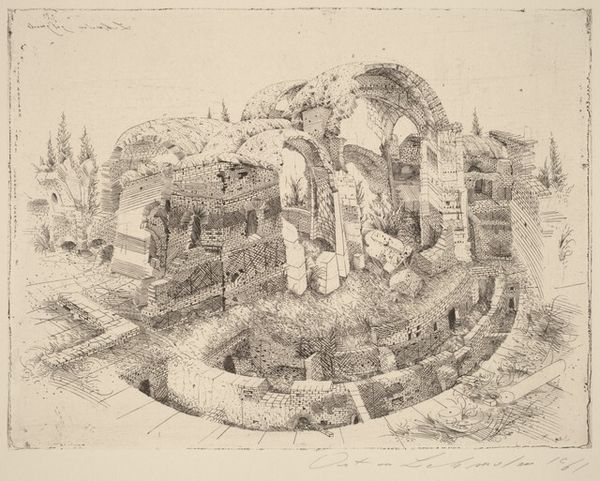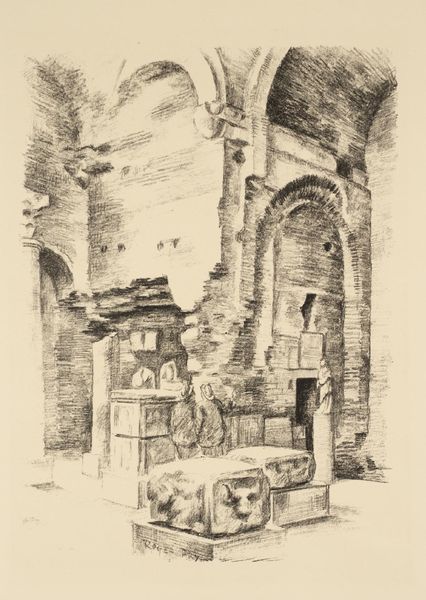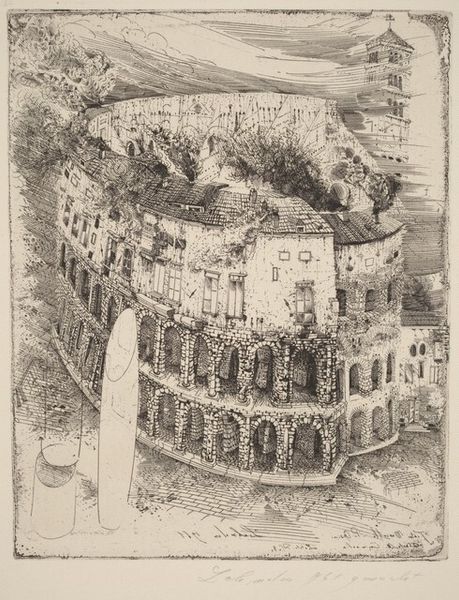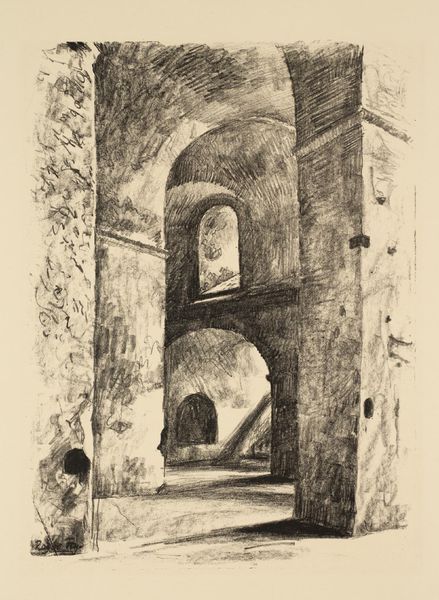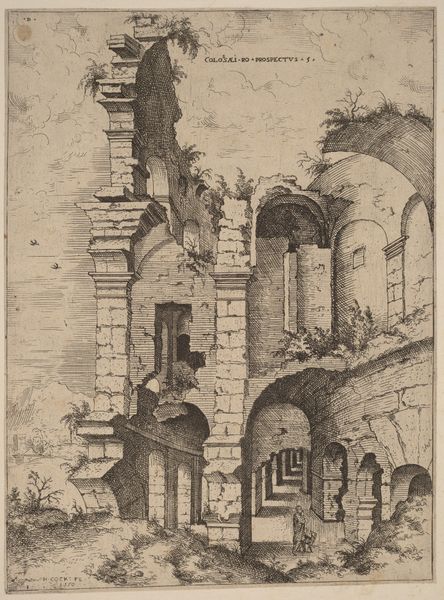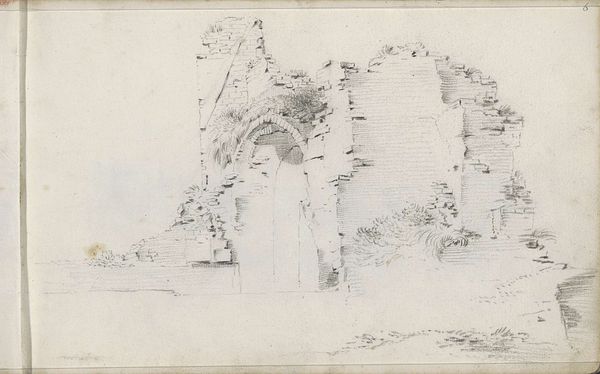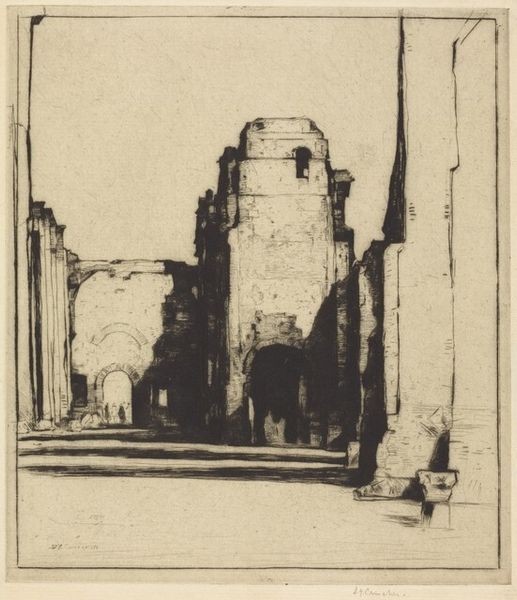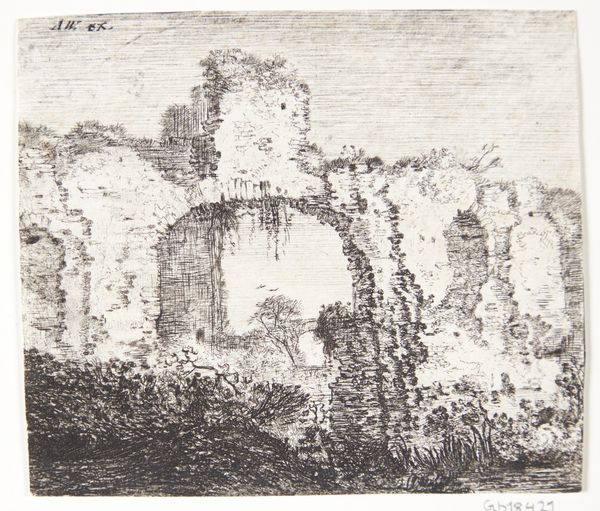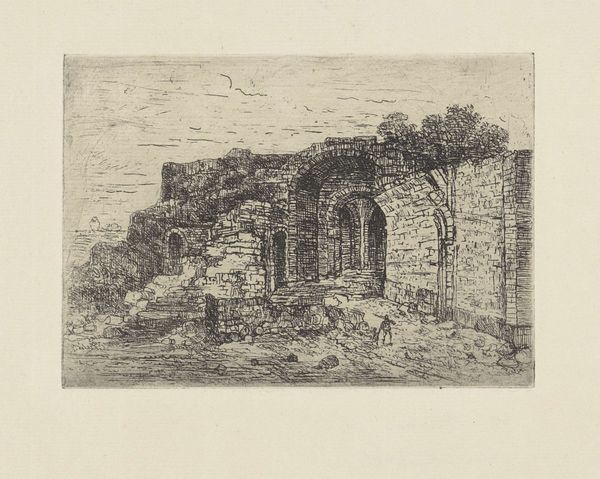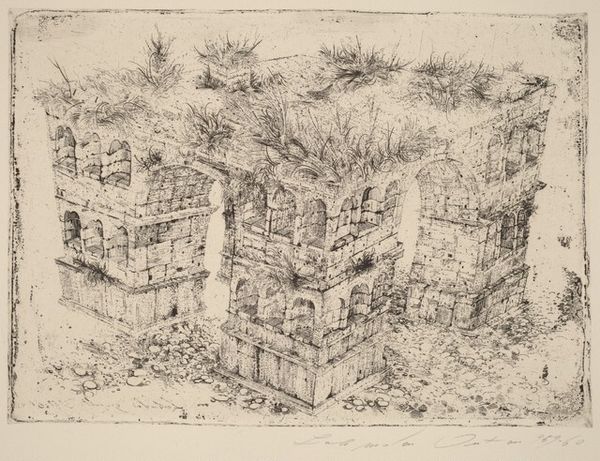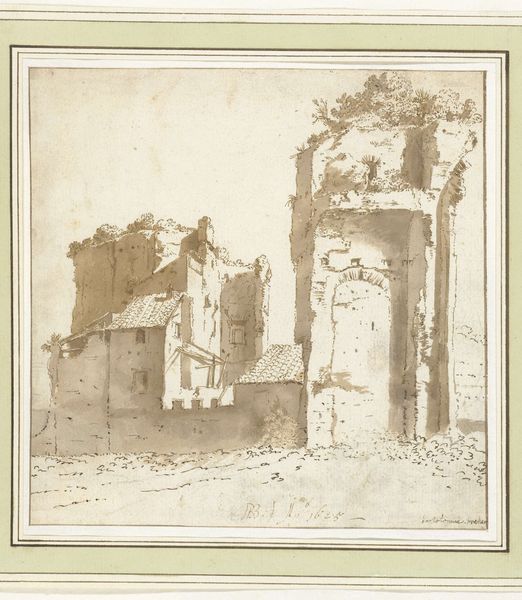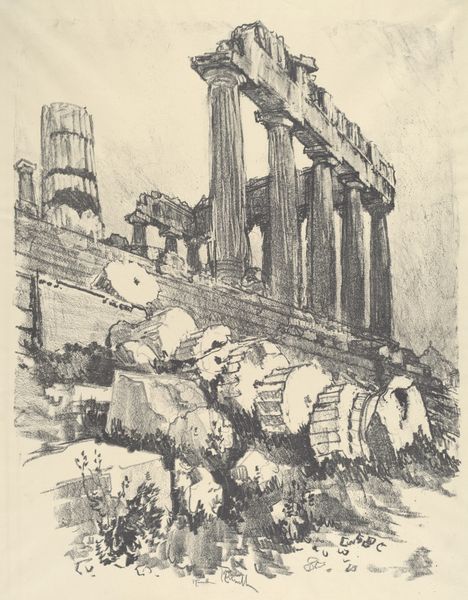
print, etching
#
ink drawing
# print
#
etching
#
landscape
#
realism
Dimensions: plate: 23.8 x 20.1 cm (9 3/8 x 7 15/16 in.) sheet: 41.2 x 34 cm (16 1/4 x 13 3/8 in.)
Copyright: National Gallery of Art: CC0 1.0
Editor: So, here we have Anton Lehmden's 1960 etching, "Aquädukt," depicting an aqueduct. There's something hauntingly beautiful about this ruin. I'm immediately struck by the way it feels both solid and fragile, present and fading. What do you see in this piece? Curator: Ah, yes! A conversation with ruins, always profound, wouldn’t you agree? I see a meditation on time and memory etched into this aqueduct's skeletal remains. The way Lehmden uses line and shadow... It feels like he’s trying to grasp something that is slipping away like smoke. I wonder, does it make you consider the aqueduct not just as a structure, but a metaphor? Editor: That's fascinating! A metaphor for what, though? Is it just the inevitable decay of everything, or something more specific? Curator: Well, isn’t that always the delicious mystery? Perhaps the ruins stand for broken systems, the remnants of civilizations. Or perhaps, in their decay, there's an undeniable persistence, beauty wrested from desolation... Think about those strong vertical lines. What might they be telling us? Editor: They do stand out. Maybe a reminder that even in ruins, something of the original purpose or design still remains. It's thought-provoking how Lehmden makes a print of something so architectural so deeply personal. Curator: Indeed. In its lines and shadows, it’s less a photograph, more a whisper. More a self-portrait by proxy. Lehmden used the stones of the past to compose his soul! And in doing so, it’s provoked an honest dialogue about the dance of creation and destruction in both his world, and ours.
Comments
No comments
Be the first to comment and join the conversation on the ultimate creative platform.
